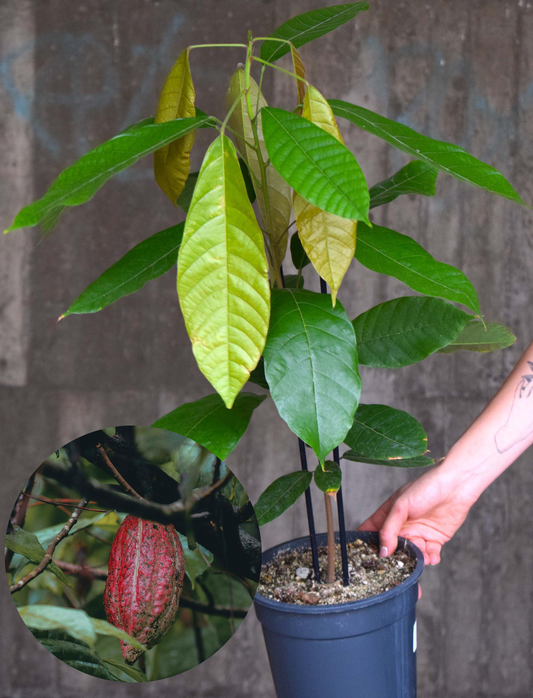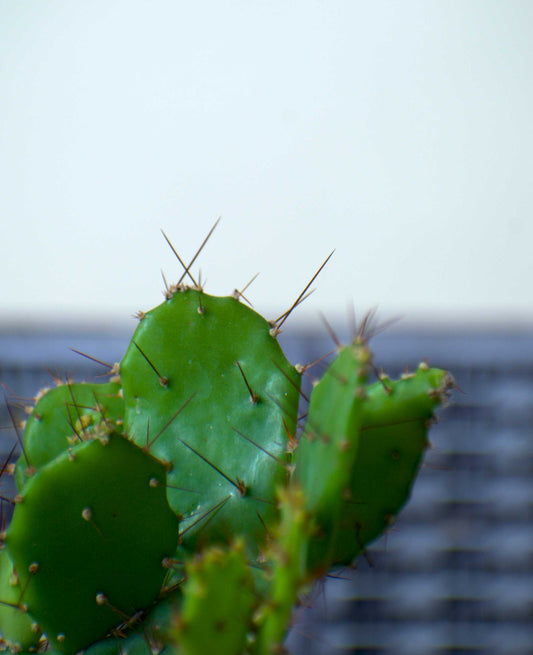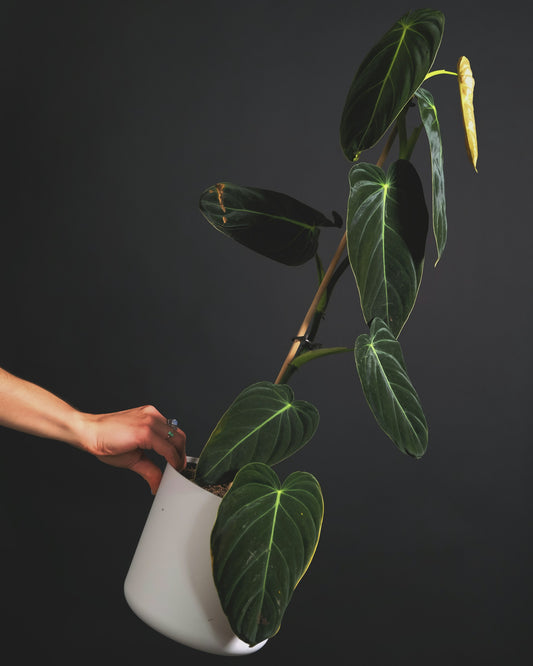Share
Coffee plant care, 10 tips for growing coffee beans at home!
Wouldn't it be cool to grow your own coffee?
With a coffee plant, you get a tropical green plant at home that also offers coffee beans if it flowers. The coffee plant is also easy to care for and thrives in less light, making it suitable for indoor cultivation.
Follow the development of the coffee plant from small green leaves to coffee bean fruits in this care guide. Below we will go over how to care for the coffee plant to get the best conditions for the coffee tree to bloom!
If you don't have a coffee tree, you can order one here.

Green unripe berries on a coffee plant
The origin of the coffee plant
The Coffea arabica plant originates from Ethiopia and Sudan in Africa, but is now cultivated worldwide in tropical areas. It is believed that Coffea arabica was the first type of coffee to be used by humans.

Currently, Coffea arabica accounts for 60% of global coffee production. The remaining 40% is accounted for by the more acidic and caffeinated Robusta coffee ( Coffea canephora).
Caffeine protects the coffee plant against pests.
The reason plants in the Coffea family produce caffeine is to protect themselves from pests that like to nibble on the nutritious coffee beans. This is also why the beans themselves have a high caffeine content and not the leaves or trunk of the coffee tree. Although they also contain smaller amounts of caffeine.
Separately from coffee, the tea bush and the cocoa plant have also developed caffeine and caffeine-like substances to combat pests.
What does a coffee plant look like?
In its natural environment , the coffee bush can grow up to two meters tall. However, when grown as a potted plant indoors, it can be kept significantly smaller.
A large pot will allow the coffee bush to grow larger than if it were in a small pot. However, we recommend giving the coffee plant a pot large enough so that you don't have to water it every quarter . It is easy to prune the coffee bush and keep the plant at a reasonable height.
The leaves of a young coffee plant are light green and shiny, but over time they darken to a deeper green. When the plant flowers, which can take up to four years, it produces small white flowers with a wonderful fragrance.
After flowering, the fruits develop, which are initially green and then ripen to a dark red color. Each fruit contains the coffee bean's seed coat and the two seeds that we know as coffee beans.
How do coffee beans grow and how do you cultivate a coffee plant?
Planting a coffee bean can be tempting, but it's usually easier to start with a ready-made plant. If you still want to try, you'll need a fresh green coffee bean and a Nutritious and well-drained soil suitable for growing the coffee bush.

Growing coffee plants from seeds takes time and requires sowing fresh beans.
It is much easier to buy a ready-made coffee plant because the coffee beans sometimes take several months before they get their first leaves.
So now you've bought your coffee bush, at Ormbunker of course. You've placed your little plant on a windowsill and are standing with your coffee cup in high spirits. In order to one day be able to fill the cup with your own grown coffee, the plant needs to thrive quite well in your home.
So how do you make your little coffee plant grow big? Read more under the next heading!
Coffea arabica | Care
1. Light:
Place your plant in direct sunlight only in the morning or evening during the summer months. Too much strong sun can damage the leaves and cause brown spots. Filtered light is perfect for creating a pleasant environment. In winter, the coffee plant thrives in as much sun as it can get.
2. Watering:
Keep the soil evenly moist but not soggy. Stick your finger into the soil; if it feels dry a few inches down, it's time to water. Since the coffee plant likes to stand in slightly moist soil at all times, the risk of black flies increases. Top up the soil with beneficial insects such as black fly nematodes 2-3 times a year to get rid of these annoying little flies.
3. Soil:
Use a well-drained soil mix suitable for tropical houseplants, preferably an organic mix that provides the right nutrients. We usually mix coconut soil with perlite and worm castings.
Coir soil is finely ground coconut fibers that are a waste product from the production of various products from coconuts. In addition, it is almost guaranteed that no pests will be carried in the soil , unlike 'regular' potting soil.
Perlite looks like small white pebbles and makes the soil light and porous. Together with coconut coir and vermicompost, it forms a soil perfect for most tropical fruit trees, including coffee plants.
4. Moisture:
The coffee plant loves humidity! Increase the humidity around the plant with the help of a humidifier or a tray of water. It thrives especially well in the bathroom or in a terrarium-like environment. You can also spray the leaves with water, which also reduces the risk of pests such as spider mites.
5. Fertilization:
During spring and summer, you can feed every two to four weeks. In autumn and winter, you can reduce or completely stop fertilizing your coffee plant. If you use some form of plant lighting, you can fertilize the coffee plant even in winter.
If you use vermicompost instead, you can replenish the soil with nutrients 3-4 times a year. The easiest way to do this is to pour 1-3L of vermicompost on top of the soil and mix it with the topsoil.
Do your plants need fertilization? Buy our worm fertilizer here.
6. Pruning:
If the coffee plant becomes too tall or lanky, prune it to shape and encourage bushier growth. When a branch or trunk is cut, new shoots will form at the nearest branch.
7. Transplantation:
Repot into a larger pot every 1–3 years or when the roots start to crowd. Make sure to choose a pot with drainage holes. For coffee, just like many other houseplants, we use almost exclusively transparent plastic pots. It is by far the easiest way to know how the roots are doing because you can see right through the plastic.
Here you can buy and read more about transparent plastic pots!

Common pest on coffee plants.
Pests on potted plants such as coffee can be easily prevented by using our beneficial insects. Beneficial insects are natural predators that feed on killing common pests such as thrips, spider mites, aphids and mealybugs.
These beneficial insects come home in small bags that are easily hung on the coffee plant. If you already have an outbreak of pests, beneficial insects can also be used for treatment, but then a different variety is sometimes required.
Even with and especially without livestock, leaves and branches should be examined at least once a week.
What do pests look like on the coffee plant?
Spin:
Look around the branches where these small spider-like insects, about 1mm long, build their silky webs. They are easy to distinguish from spider webs because of their distribution on the plant. Spiders rarely build webs on every branch and the webs tend to be spread out over the entire plant. Also, if you look really closely, you can see small red spider mites around the webs when they are infested.
Trips:
Thrips are small insects, 3-4mm long, that suck the sap from the leaves of the coffee plant. They often leave small white lines that are visible on the leaves. Under the leaves there may be black oblong insects and white smaller insects (thrips nymphs). Thrips are difficult to get rid of, but Orius beetles in particular can be very effective in thrips outbreaks.
Aphids:
Aphids are green insects that are often found on rolled-up new leaves where they reproduce. These insects can be easily removed by spraying the leaves with a strong stream of water in the shower.
You can read more about and buy livestock with free shipping here!
Are coffee plants poisonous?
Yes, all parts of the Coffea arabica plant, except the fruits and processed coffee beans, are toxic to humans and animals if ingested. Therefore, keep the plant out of reach of children and pets.

Fragrant white coffee flowers on Coffea arabica which then develop into coffee fruits
Growing a coffee plant indoors at home in Sweden is both decorative and fun. Although it takes patience to see it flower and bear fruit, you will be rewarded with shiny, green leaves in the meantime.
Why not try growing a coffee bush and let this elegant plant become the next star in your collection of indoor green plants? Grow your own Arabic coffee at home, buy coffee plants online!










